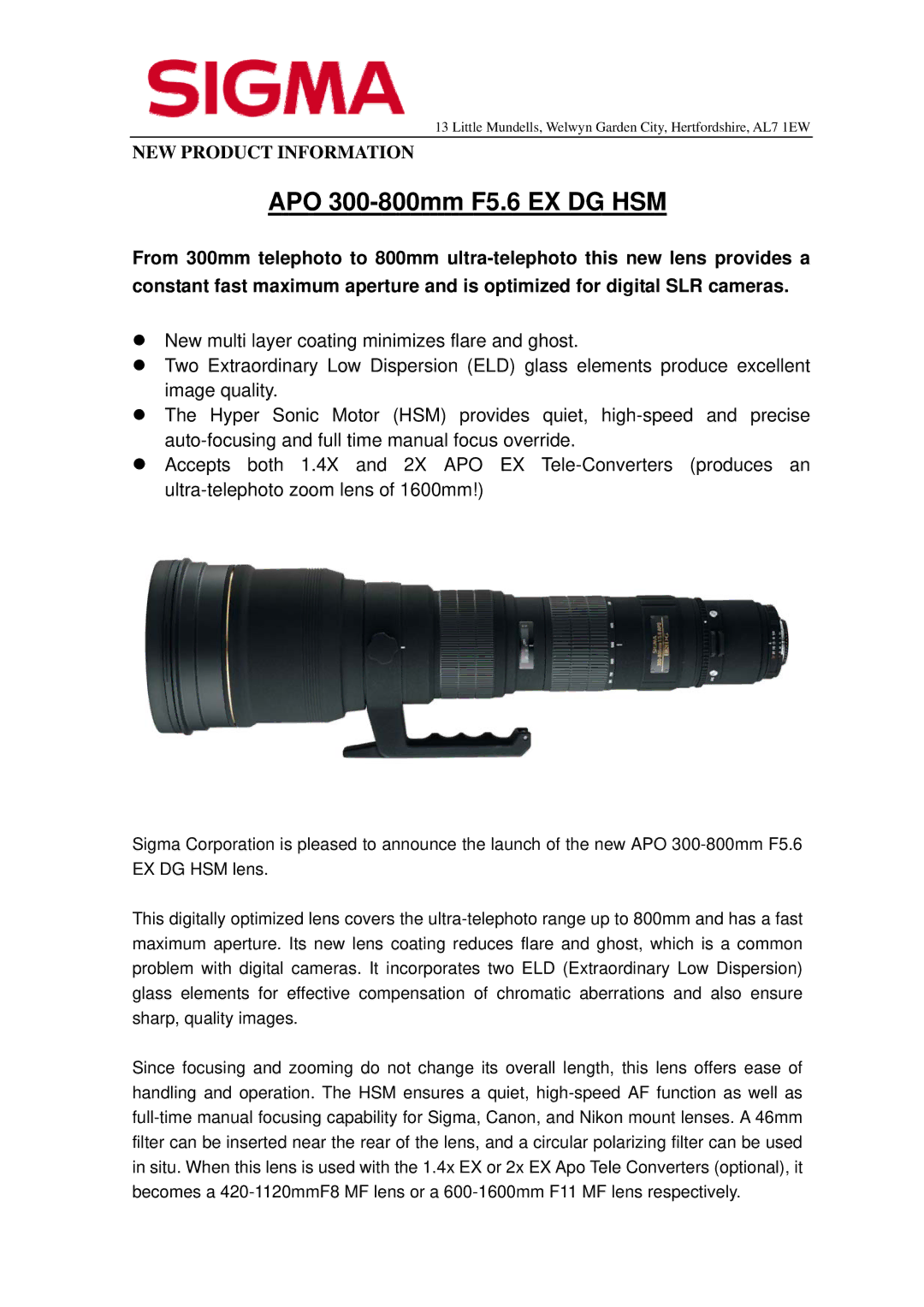595110, 595107, 595101 specifications
The Sigma 595101, 595107, and 595110 are advanced digital signal processors (DSPs) designed for a variety of high-performance audio processing applications. These models are particularly renowned for their exceptional capabilities in music production, sound engineering, and complex audio processing tasks.One of the key features of the Sigma 595 series is its powerful processing architecture, which allows for concurrent execution of multiple audio processing algorithms. This capability is essential for applications that require real-time audio manipulation and effects, such as reverb, equalization, and audio mixing. The DSPs are built on a highly efficient architecture that ensures low latency and high throughput, making them ideal for both live and recorded sound environments.
The 595101 model specifically stands out due to its integrated high-resolution analog-to-digital and digital-to-analog converters. This integration ensures that audio signals retain their clarity and fidelity throughout the conversion process. Furthermore, the 595101 supports a wide range of sample rates, which provides flexibility for different audio applications, from professional studio recordings to live performances.
On the other hand, the Sigma 595107 offers enhanced connectivity options. It features multiple input and output channels, which enable users to connect a greater number of devices, such as microphones, instruments, and effect units. This model is particularly beneficial in complex setups where multiple audio sources need to be managed simultaneously. The advanced networking capabilities also allow for seamless integration into larger audio systems, facilitating collaboration among different audio equipment.
The Sigma 595110 takes innovation a step further by incorporating advanced integration of machine learning algorithms. This enables the DSP to learn from user interactions and optimize audio processing tasks, making it an invaluable tool for audio professionals seeking to streamline their workflow and achieve superior results. With its robust algorithm processing capabilities, the 595110 can adaptively adjust settings based on real-time analysis of audio signals, enhancing both efficiency and sound quality.
In summary, the Sigma 595101, 595107, and 595110 DSPs excel in high-performance audio processing, each bringing unique features to the table. Whether it's the high-resolution conversion of the 595101, the extensive connectivity of the 595107, or the machine-learning capabilities of the 595110, these DSPs are designed to meet the demanding needs of modern audio professionals, providing tools that are both powerful and flexible.

